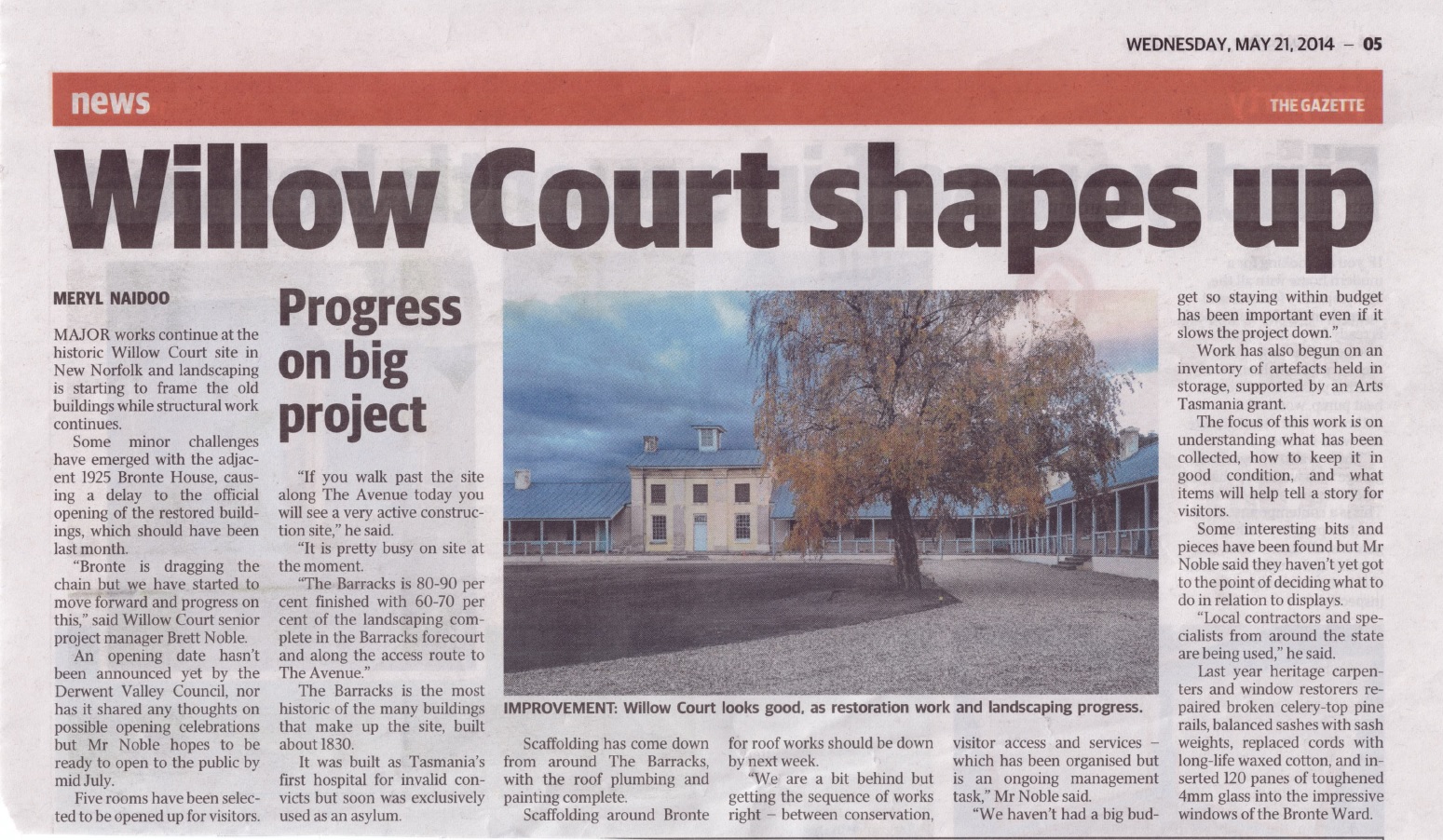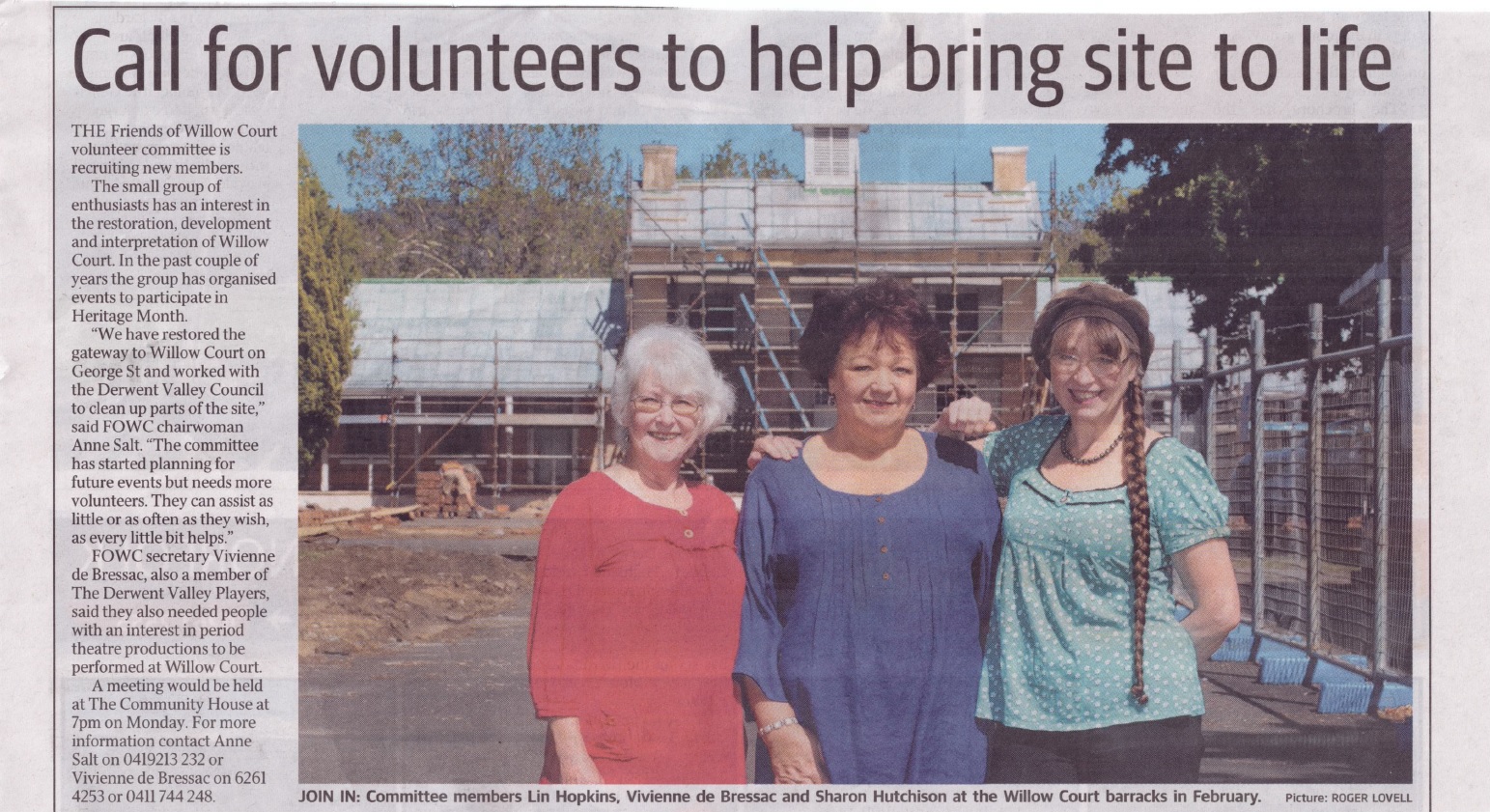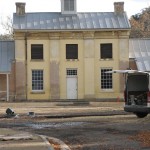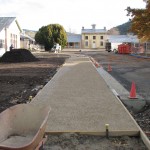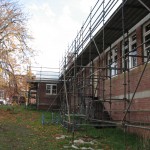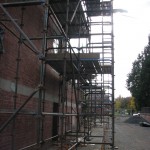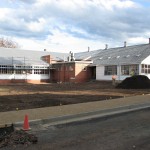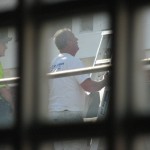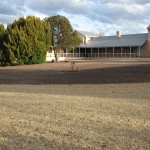Call for volunteers to help bring site to life.
Restoration behind
Today, Senior Proj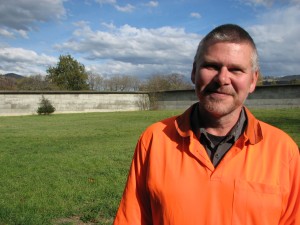 ect Manager of the Willow Court Precinct restoration, Mr Brett Noble confirmed that the project is running two months behind. A look around the site today revealed a lot of work, from guttering, painting , landscaping and soon to be connected electric power. The centre area of the Barracks will soon have lawn seed laid which will frame the oldest asylum in the southern hemisphere. Painters were working on Bronte house today and the finish for the Barracks still needs to be applied. New pathways were undergoing final works around Bronte, which look great. Many items throughout the site have been methodically cataloged and bear the tags. The toilet block at the back of Bronte will be demolished in the coming week and the original veranda will be restored.
ect Manager of the Willow Court Precinct restoration, Mr Brett Noble confirmed that the project is running two months behind. A look around the site today revealed a lot of work, from guttering, painting , landscaping and soon to be connected electric power. The centre area of the Barracks will soon have lawn seed laid which will frame the oldest asylum in the southern hemisphere. Painters were working on Bronte house today and the finish for the Barracks still needs to be applied. New pathways were undergoing final works around Bronte, which look great. Many items throughout the site have been methodically cataloged and bear the tags. The toilet block at the back of Bronte will be demolished in the coming week and the original veranda will be restored.
Have a look at the new photos of the site
Ree Pettifer
 CLICK HERE to find the latest upload. The Ree Pettifer report is now on our articles page. Although some sections are missing this is still an enlightening outsiders review and is a great read of conditions, staffing arrangements and facilities at Willow Court Centre.
CLICK HERE to find the latest upload. The Ree Pettifer report is now on our articles page. Although some sections are missing this is still an enlightening outsiders review and is a great read of conditions, staffing arrangements and facilities at Willow Court Centre.
“It would be easy to lay the blame on the nursing staff for the living conditions and standards of care of residents at Willow Court Centre. To do so however would be to over simplify the forces at play in the working life of the nursing staff at Willow Court.”
“The most disconcerting and most strongly held of all opinions was that of covert and overt victimisation of those who dare to question or speak out. Sudden changes to night shift, to an area of high dependency, a pass opposite to one’s spouse or unfavourable staff appraisals were frequently nominated as acts of covert victimisation.
Abusive telephone calls, threats of violence against staff and their families were also frequently reported and can be personally verified by the writer”.
“In one house toothbrushes were stored communally in jugs of water with the bristles submerged and the names on toothbrushes were illegible. In one house six toothbrushes stored in a communal container had obviously never been used and had accumulated dust overtime”.
Ree Pettifer September 1989
Complete book: Part B2 NEW Release
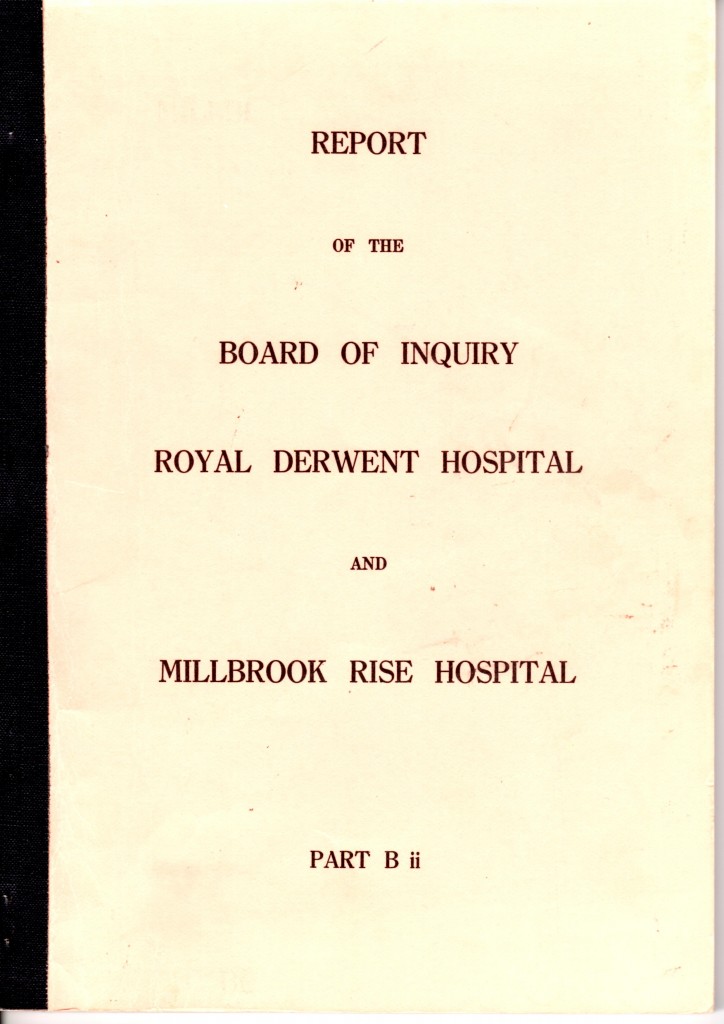 Complete book: Part B2 (terracotta cover) NEW Release (May 11th 2014) CLICK HERE
Complete book: Part B2 (terracotta cover) NEW Release (May 11th 2014) CLICK HERE
•• I wish to make it clear from the beginning that so many of the staff of the Royal Derwent Hospital have been kind. understanding, helpful and dedicated, and for the duties and general work they perform, they are deserving of tremendous credit.
Regretful is the fact that by activities and behaviours, misunderstandings, failure to correctly assess a patient’s limitations and such like. always appears to lead to undeserved and unwarranted adverse publicity which pervades the whole of the Royal Derwent Hospital .•• ”
Pages 189-332
Public Lecture Series
Public Lecture information sheet
Invitation to a talk by Margaret Reynolds “The Royal Derwent Hospital at New Norfolk”
Many Tasmanians have links to this hospital but few want to talk about their experience of the
state’s only mental institution. Some people worked there and some had family in treatment
briefly or for many years. A large number of children with disabilities grew up there and some
recall abusive treatment.
Time: Thursday, 1 May 1:00 PM to 2:00 PM
Venue: Allport Library and Museum of Fine Arts, Ground floor, 91 Murray St (LINC Tasmania)
Jointly Sponsored by the Tasmanian Archive and Heritage Office and the
Professional Historians Association (Tasmania)
RSVPs are essential
Please contact:
Caroline Evans
carolineevans@iinet.net.au
Landscaping looking good.

Major works continue at the Willow Court site and the landscaping is starting to frame the historic buildings while structural work continues with some minor challenges in Bronte bringing works to a stop for a short time. An opening date still hasn’t been announced as yet from the Derwent Valley Council, nor have they shared any thoughts on any opening celebrations that they have arranged.
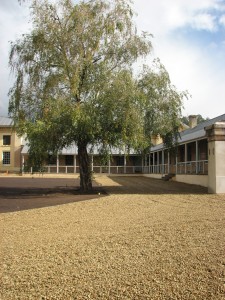

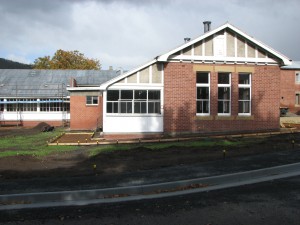
Willow Court is heard in Canberra
 “Further south, the township of New Norfolk in the Derwent Valley is a service town for the agricultural and remaining forestry activity in the surrounding area. New Norfolk has a deep soul, and many locals still have close and personal connections to the historically significant Willow Court, which was for many years Tasmania’s institutional psychiatric asylum. The buildings, which pre-date Port Arthur, are some of the oldest in the nation. It is a national disgrace that such significant architectural and social history is being neglected.” Eric Hutchinson. first speech as the Member for Lyons. 3 December 2013.
“Further south, the township of New Norfolk in the Derwent Valley is a service town for the agricultural and remaining forestry activity in the surrounding area. New Norfolk has a deep soul, and many locals still have close and personal connections to the historically significant Willow Court, which was for many years Tasmania’s institutional psychiatric asylum. The buildings, which pre-date Port Arthur, are some of the oldest in the nation. It is a national disgrace that such significant architectural and social history is being neglected.” Eric Hutchinson. first speech as the Member for Lyons. 3 December 2013.
It would be hoped that there will be funding for the social restoration as described by Eric, as well as the physical restoration and this will be inclusive of the past patients/residents, families and advocates. Click image of Parliament house to read and listen to the full maiden speech.
Board of Inquiry, new book released for the first time.
Never publicly available before today, this is one of three volumes (blue cover) that we are scanning and releasing for all to read, study and make up their own minds about Royal Derwent Hospital and Mill Brook Rise and the care provided. These robust tested testimonies are proof that allegations were listened to and some proved and other unproved. Such a mixed history has left many different experiences for such a diverse community. Read and make up your own mind.
Complete book: Part B1 (blue cover) NEW!
” .. They had me by the throat and I was bruised all up the side there and I was that sore I could hardly damn well walk and I had jeans on … they we ripped off, and the buttons, there was only one button on and my bra were all showing you know. And when they got me across to A Ward I was thrown into a cell into a cell next to the visiting room, I was throw in there and left… “.
Pages 46-188 CLICK HERE
Appendix released in full.
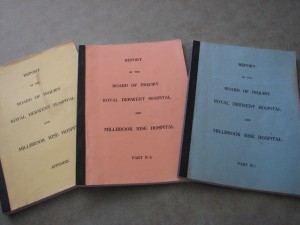 All three parts are now online from this first book for the first time in history. This is the account of Patient “A”, Patient “B” and Witness “9”. (Yellow Cover)
All three parts are now online from this first book for the first time in history. This is the account of Patient “A”, Patient “B” and Witness “9”. (Yellow Cover)
Patient “A”: “When about 12 months old, being ill, she was taken to the Norfolk District Hospital where severe gastro~enteritis was diagnosed. At 2 years of age she started having “funny little turns” which commenced a period of visitations to the Royal Hobart Hospital. When about seven she attended Tallre School but her hyperactivity was disruptive and the school authorities suggested, for the parents consideration, admission to Royal Derwent.”
Patient “B” is a seven year old male patient. ” we saw the children in M Ward and they were unkempt, dirty, and smelly and there was a general stench about the ward. We actually stepped over a child on the floor whom we knew. The child had been at the Quindalup Training Centre some six weeks before. The child had lost weight and its hair was so dirty it was matted. Another child was sitting on the floor with blood oozing out of its mouth. There were no toys around for the children to play with. When the Sister asked where the toys were she was told they were locked away because the children would break them… ”
Witness “9”: Child Care Worker. Allegations of assault upon infant patients by Staff of ‘M’ Ward. “I have heard about the Royal Derwent before I did go up there and I wanted to see It for myself. I wanted to, you know, just work there to, well, and partly to see children that I had worked with when they were very young, and I was curious to how they would be a few years after”
